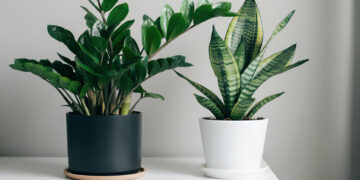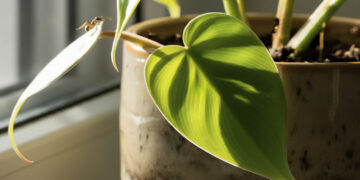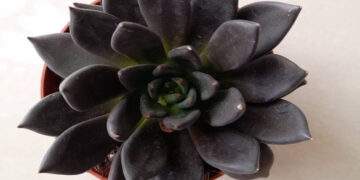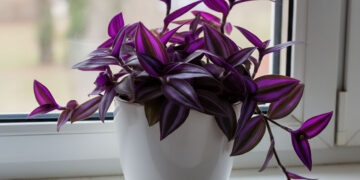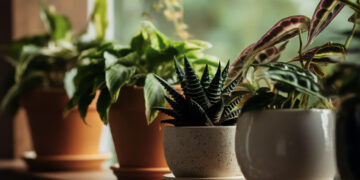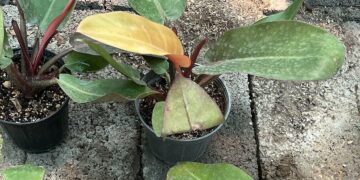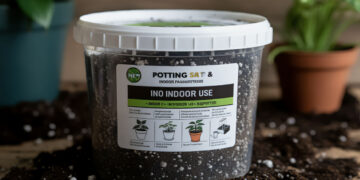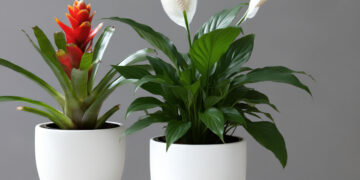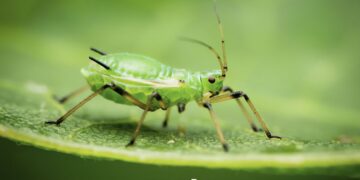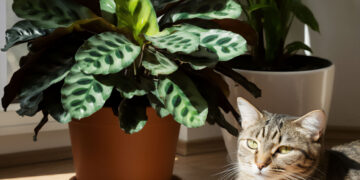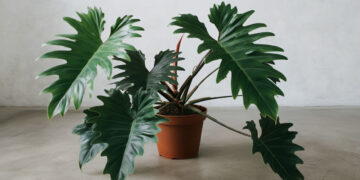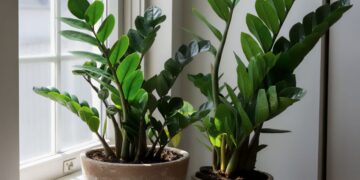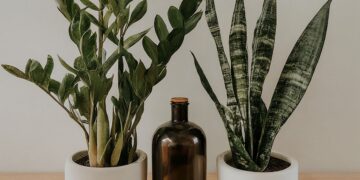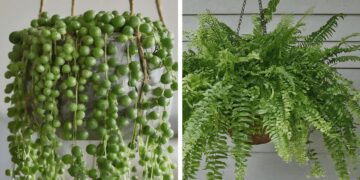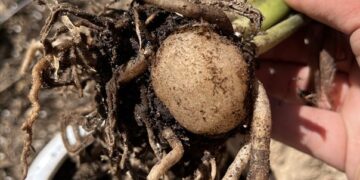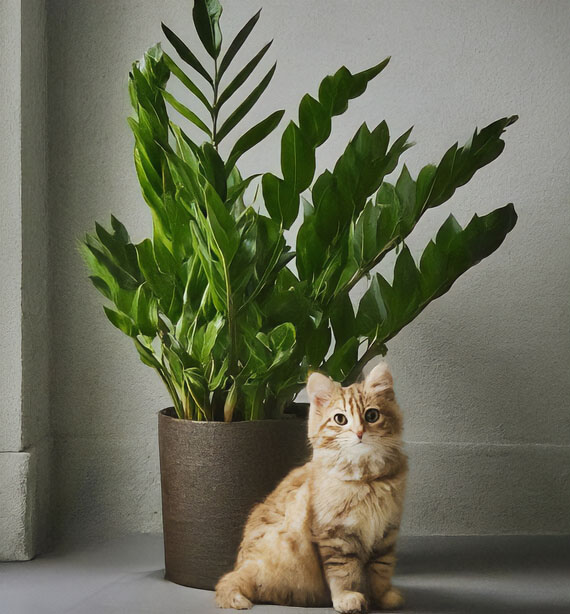
Zamioculcas Zamiifolia, commonly called ZZ plant is a suitable houseplant with bushy and green leaves and also popular among who are obsessed with flowers. That will definitely make your house beautiful and breathtaking. Unfortunately, there is a red flag for keeping the ZZ plant. Some people believe that ZZ plants toxic to humans and pets, and now I will explain it from A to Z that whether this is true or not.
Is the ZZ Plant Toxic to Pets and Humans?
Once and for all that yes, ZZ plant is poisonous for humans, dogs, cats and birds, but it is not typically deadly. You may have heard that ZZ plants cause cancer. Do not believe the rumors .In fact, it has oxalate crystals which are sharp and needle-like, and if they enter soft tissues of body by eating or touching, they causes skin irritation, oral discomfort and gastrointestinal problems for a while.
Please note that all types of ZZ plants, including regular ZZ plants, Raven ZZ plants, and others, are toxic.

Effects on Humans and Pets
As the saying goes, don’t judge a book by its cover. No one can imagine that a green plant like ZZ plant can be toxic to cats and make them feel sick. Now we want to know what are the bad effects of ZZ plant.
Toxic effects of ZZ plant on humans
This plant directly affects the skin, digestive system and eyes. So you should teach children to stay away from your ZZ plant.
Skin contact: For example, if your hand touches the sap of ZZ plant, it will turn red and some itchy rashes gradually appear on your skin. If it stays on your skin for a long time, it may even cause several small blisters.
Eye Contact: If it comes into contact with your eyes, the eyes will become red and irritated and you find yourself tearing up suddenly.
Ingestion: If a curious child accidentally puts a ZZ plant in his mouth, first he will feel a burning sensation in his throat and mouth, then his throat will swell so that he can no longer swallow, and it will end in stomach pain, diarrhea and vomiting.
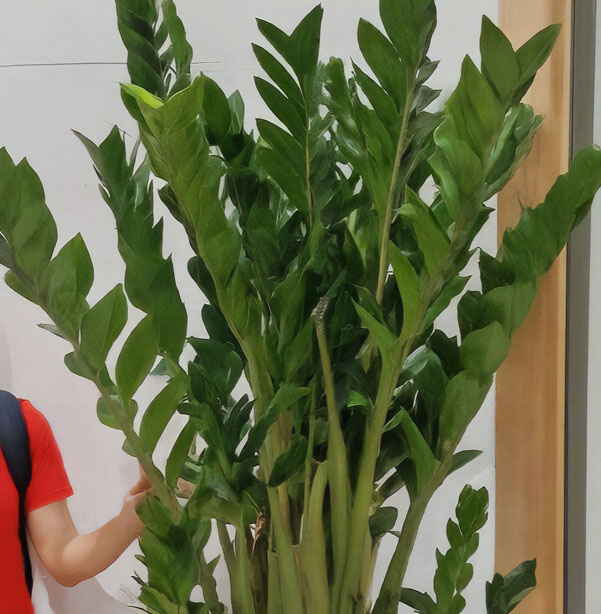
Signs of ZZ Plant Toxicity in Pets
This houseplant can have harmful impacts on your pet it may be toxic to dogs, so please keep it where even the cat or dog that you have in the house, can’t accidentally touch or eat it. Because both the ZZ plant and your cute animal get hurt. Now it is better to know what your pet will experience, if this happens.
Oral Irritation: Your pet begins to drool and paws at the mouth and hasn’t desire to eat and cannot swallow food easily.
Gastrointestinal disorders: Your dog or cat will feel pain in the belly and suffer from problems such as vomiting and diarrhea, and if these symptoms become severe, there is also dehydration.
Skin Contact: If your pet touches the sap of the ZZ plant, its skin will become red and itchy and blister in sensitive places.
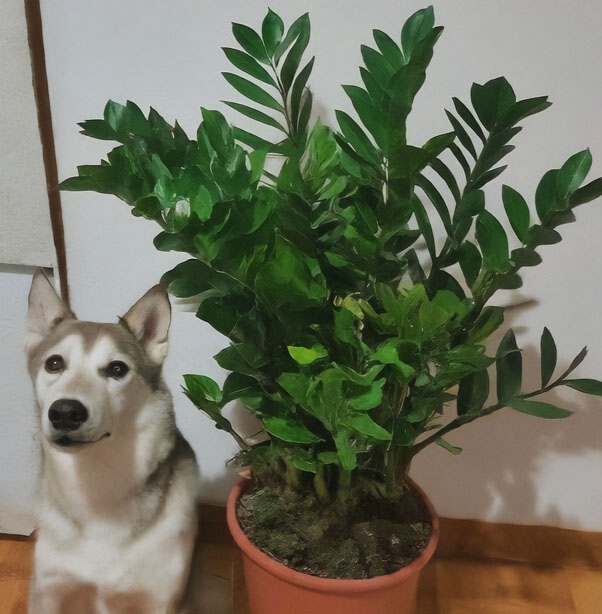
Preventive actions for ZZ Plant Safety
Prevention is better than treatment. In order to create a safe environment for you and your pet at home, it is better to do some safety work before problems arise.
Safe Handling Practices
Well, during the pruning ZZ plant or repotting ZZ plant, first be sure to wear gloves. Second, wash your hands with soap and water and third, use pruning tools so that your hands have minimal contact with the ZZ plant.
Strategic Placement
Where you put the ZZ plant is also very important. Choose a place where children and pets cannot access it, such as home offices and greenhouses with limited access. . For this goal, you can blend it with Safe Plants and use high shelves or hanging Planters and decorative cages with a clear cover.
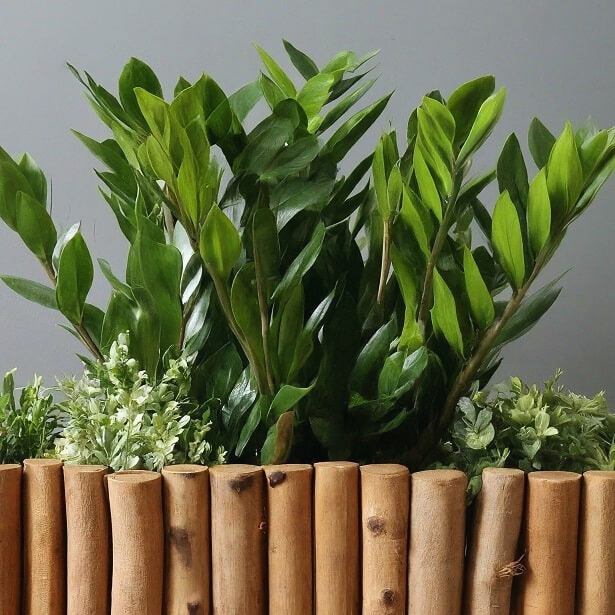
Using Deterrents
There are some pet-safe sprays that have an unpleasant smell for pets. Keep it around the plant so that your cat or dog does not come close the ZZ plant. Moreover, you can put big and smooth stones around the base of the ZZ plant as obstacles so that nobody can chew or dig it.
Educational Measures
As soon as you buy a ZZ plant, you must tell family members, especially children, that this plant is toxic to humans and pets and should not be touched. In addition, it is better to put a danger sign next to it, so that even if you have a party with your beloveds, it will understand that no one should be contact with it.
Routine Checks
Control the ZZ plant every once in a while to make sure it is healthy, in this way, children or dogs and cats will less accidentally come across the fallen leaves and debris. Fortunately, smart Sensors and Automated Watering Systems were made for this purpose and are useful.
Emergency treatment
Always have a first aid kit includes gloves, soap, cold compresses, and contact information for poison control centers and veterinarians at home and know what to do in case of an accident.
Now suppose that your cat suddenly chews the ZZ plant leaves or that the curious child put his hand in its sap and then rubs his eyes. Do not be afraid because this poison is not typically deadly and fetal and you can reduce the risk of this poison by taking necessary measures.
Immediate treatment for pets
Keep calm, remove the eaten part of the ZZ plant from the pet’s mouth, wash its mouth, monitor the vital signs, and if it does not improve, go to the vet.
Immediate treatment for humans
The skin, digestive system and eyes are exposed to the danger of ZZ plant poison and I will explain step by step how to get rid of it.
Skin Contact: Wash the affected area with warm water and soap for 10 minutes and apply a cold compress on it. Try not to scratch it and you can get help from over-the-counter hydrocortisone cream or calamine lotion for faster recovery.
Ingestion: Continue washing and drinking liquids such as water or milk. In this way, the burning of your throat and mouth will be reduced. If vomiting, diarrhea, or swallowing problems do not resolve, be sure to see a doctor.
Eye contact: Just like the steps you did for the skin, wash your eyes with lukewarm water, don’t scratch them, and if it doesn’t get better, see a doctor.
Non-Toxic Alternatives to ZZ Plants
If you fancy having flowers in your house and you are worried about your child or cat and dog, I can introduce some pet-friendly houseplants instead of ZZ plant and tell you their features so that you make up your mind. But in my opinion, before replacing it, maybe it’s better to also know about the benefits of the ZZ plant and then decide.
– Spider Plants: Easy to care for and grow.
– Boston Ferns (Nephrolepis exaltata): capable of living in humid places with indirect light.
– Bamboo Palms (Chamaedorea seifrizii): giving a tropical feel to the house.
– African Violets (Saintpaulia): Painting the house and suitable for a small space.
– Parlor Palms (Chamaedorea elegans): Stubborn in low light.
– Areca Palms (Dypsis lutescens): The enemy of poisons is like formaldehyde and xylene.
– Cast Iron Plants (Aspidistra elatior): Compatible with harsh conditions.
– Ponytail Palms (Beaucarnea recurvata): making your house eye-catching.
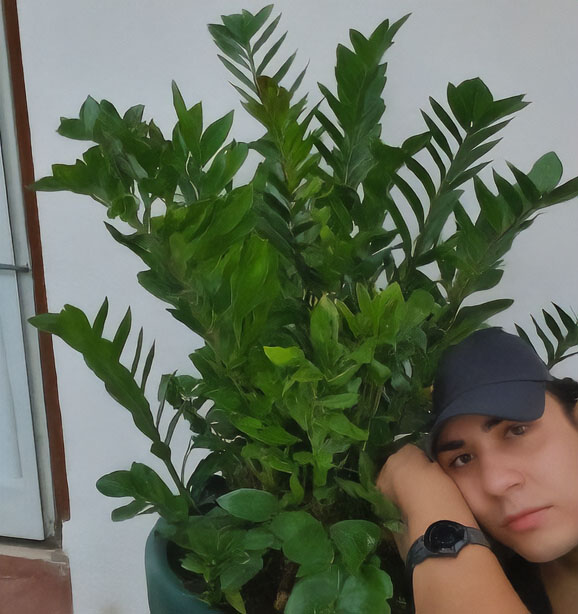
sources: https://plants.ces.ncsu.edu – https://homegarden.cahnr.uconn.edu – https://plants.ces.ncsu.edu
Do you have any questions or experiences to share that could help me and other readers? Please comment below. Your insights are invaluable.

